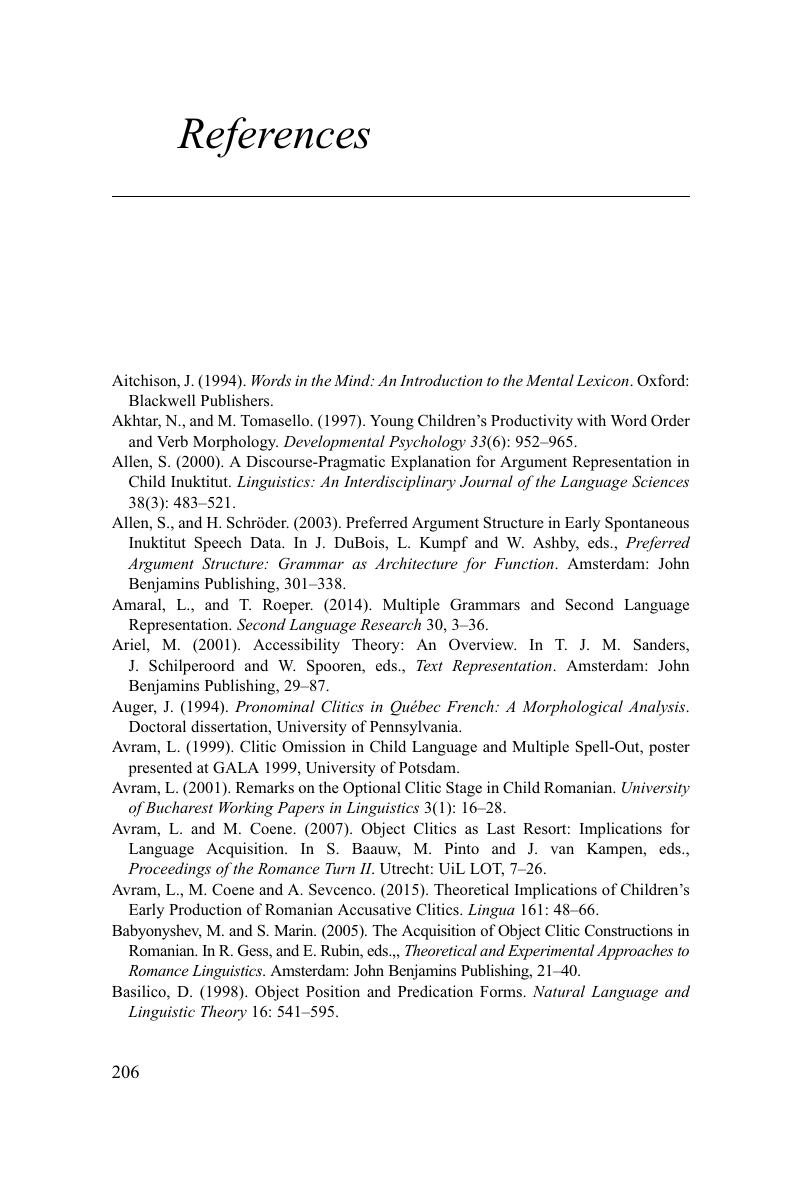Book contents
- Direct Objects and Language Acquisition
- Cambridge Studies in Linguistics
- Direct Objects and Language Acquisition
- Copyright page
- Contents
- Figures
- Tables
- Foreword
- Acknowledgments
- Abbreviations
- 1 Missing Objects in Child Language
- 2 From the Missing to the Invisible
- 3 Rome Leads to All Roads
- 4 Interpreting the Missing Object
- 5 How Unusual Is Your Object?
- 6 Conclusion
- References
- Index
- References
References
Published online by Cambridge University Press: 21 December 2017
- Direct Objects and Language Acquisition
- Cambridge Studies in Linguistics
- Direct Objects and Language Acquisition
- Copyright page
- Contents
- Figures
- Tables
- Foreword
- Acknowledgments
- Abbreviations
- 1 Missing Objects in Child Language
- 2 From the Missing to the Invisible
- 3 Rome Leads to All Roads
- 4 Interpreting the Missing Object
- 5 How Unusual Is Your Object?
- 6 Conclusion
- References
- Index
- References
Summary

- Type
- Chapter
- Information
- Direct Objects and Language Acquisition , pp. 206 - 227Publisher: Cambridge University PressPrint publication year: 2018



